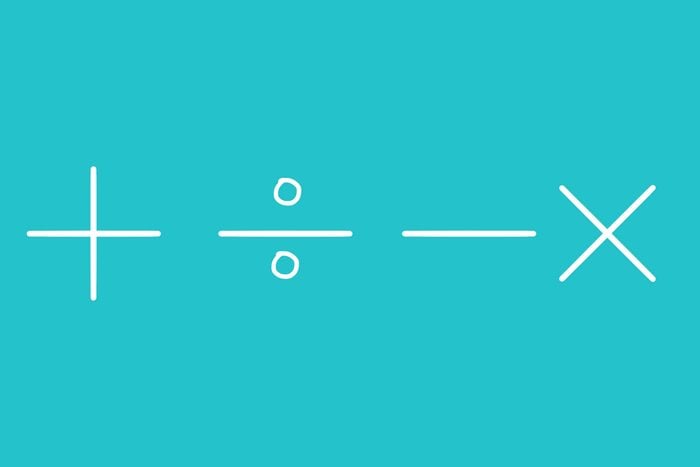
Making math quick with these tricks
Juggling numbers isn’t everyone’s forte—even though math manages to sneak its way into our everyday lives. Fortunately, these easy-to-remember math tricks will be your best friend next time you’re faced with a tricky equation and don’t have a calculator handy. Also, don’t miss these math lessons you’ll actually end up using in real life.
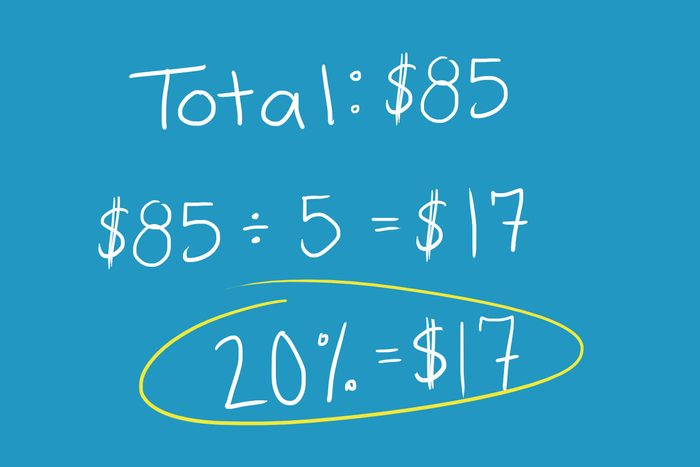
Finding a 20 percent tip
Did you enjoy your dining service? Leave your server a 20 percent tip with this easy math trick. According to Kate Snow, author of The Math Facts That Stick series, all you have to do is divide your check amount by five. For example, if your check comes to $85, divide that by five and your 20 percent tip will be $17. For more on tipping, here’s our guide on how much to tip in every situation.
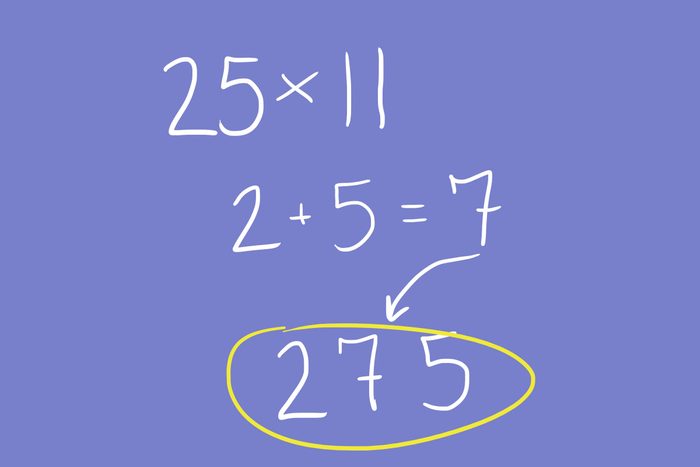
Multiplying two-digit numbers by 11
Multiplying two-digit numbers by 11 is a breeze with this clever trick from math.hmc.edu. Simply add the two digits together and place the sum in the middle. For example, if you’re multiplying 25 by 11, add the two and five together to get seven, and place the seven between those two numbers to find the final answer, which is 275.
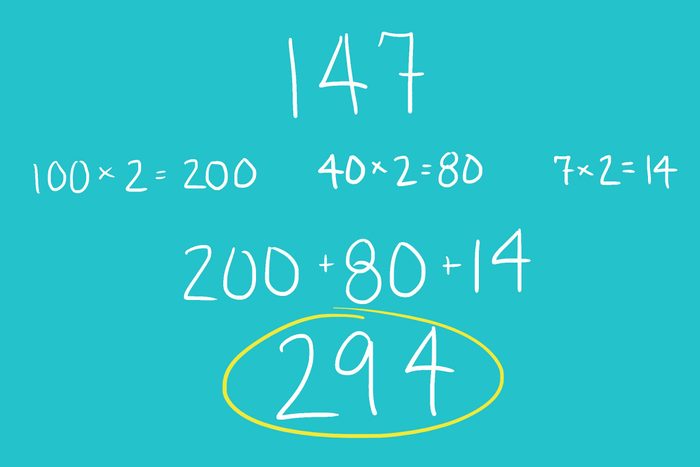
Doubling
To double a large number, multiply each individual number by two and add them together. Snow suggests starting from the left to make it easier to keep track of the numbers. “For example, to double 147, start with the hundreds place. Double 100 is 200. Double 40 is 80. Double seven is 14. Add them all up (200 plus 80 plus 14) and you get 294,” says Snow. If you think you’re a math expert, try out these hard math problems.
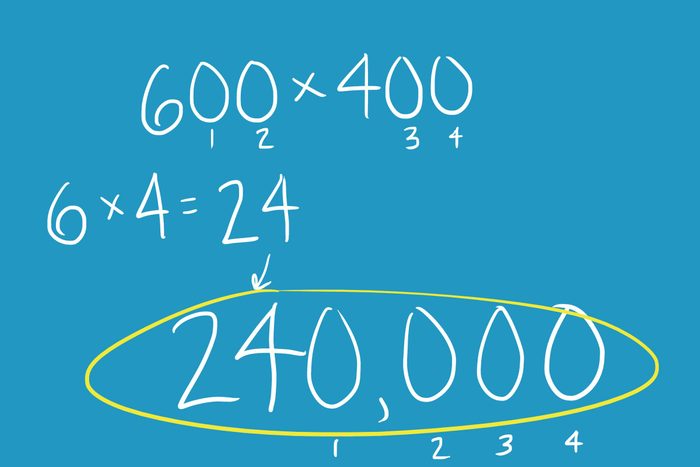
Multiplying numbers that end in zero
Even equations involving large, intimidating numbers that end in zero can be easily solved with this handy trick. According to education.cu-portland.edu, just exclude the zeros from the equation, then add them back in afterward. For example, if you’re multiplying 600 by 400, exclude the zeros and solve for six times four, which is 24. After, count the total number of zeros that were in the original equation and tack them onto the number you solved for to find your final answer. Since there were four zeros in the original equation, your final answer for this example is 240,000. This is how mental math works.
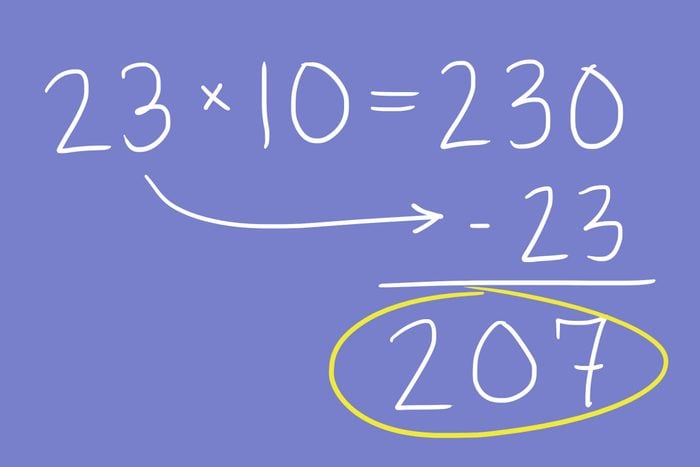
Multiplying by nine
If you don’t have your nines times table memorized, not to worry. According to Snow, to multiply by nine, simply multiply the number by 10 first, then subtract the original number. For example, if you need to multiply nine by 23, multiply 23 by 10 to find 230. Then, subtract 23 from 230 to find your final answer of 207.
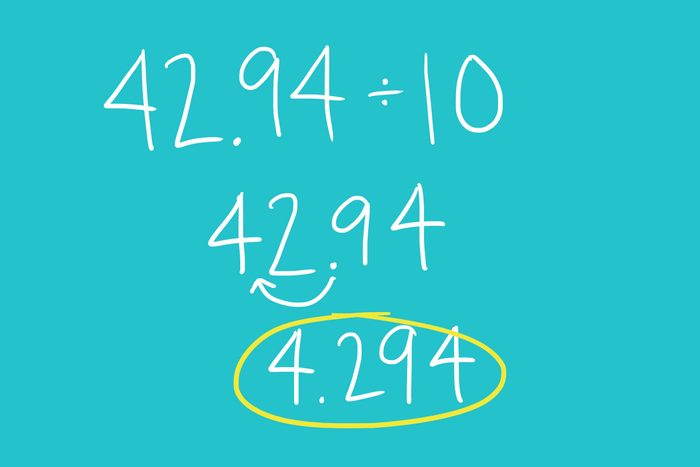
Dividing by 10, 100, or 1,000
To divide a number by 10, all you need to do is move the decimal place one spot to the left of the original number to find your answer, according to Snow. To divide by 100, the same idea applies, except you’ll move the decimal place two spots to the left of the original number. As for dividing by 1,000, move the decimal place three spots to the left. For example, if you’re dividing 42.94 by 10, you simply move the decimal place one spot to the left to find your final answer of 4.294.
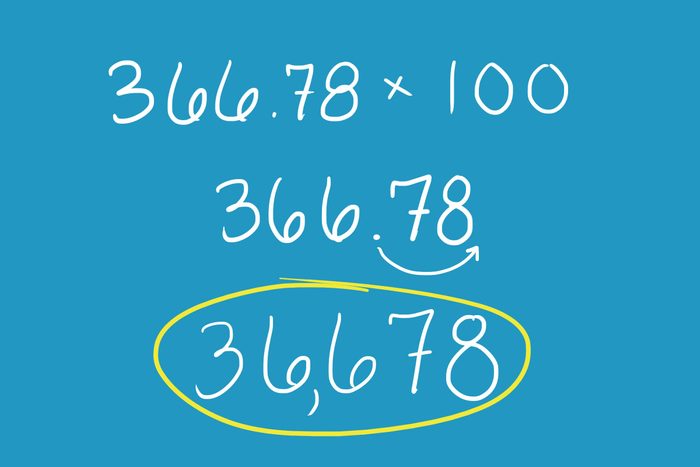
Multiplying by 10, 100, or 1,000
Similar to how you divide a number by 10, 100, or 1,000, Snow says you’ll need to do the opposite to multiply by them. To multiply a number by 10, move the decimal place one spot to the right. To multiply a number by 100, move the decimal place two spots to the right. To multiply a number by 1,000, move the decimal place three spots to the right. For example, if you need to multiply 366.78 by 100, shift the decimal place two spots to the right to find your final answer of 36,678. By the way, if you can solve this math problem on the first try, you might be a genius.
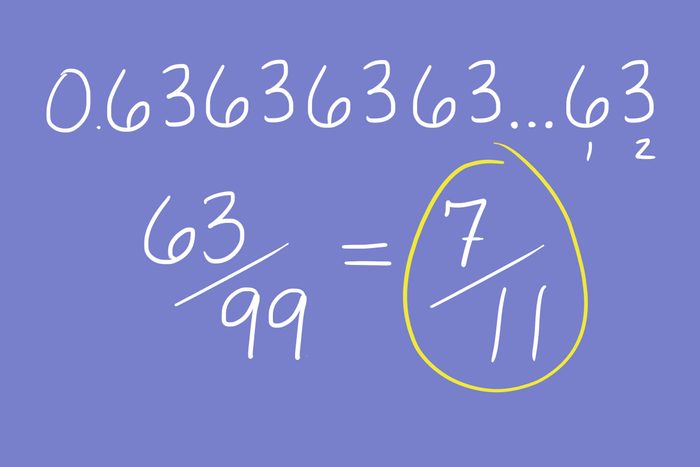
Turning a repeating fraction into a decimal
According to businessinsider.com, there are three steps you’ll need to follow to easily turn a repeating decimal into a fraction. First, find the number that is repeating. For example, in the number 0.636363…, 63 is the repeating number. Then, figure out how many places that number has. In this example, 63 has two places. Finally, divide the repeating number by a number that has the same amount of places made up by nines, which would be 99 in this case. Reduce the fraction of 63/99 to 7/11—and done.
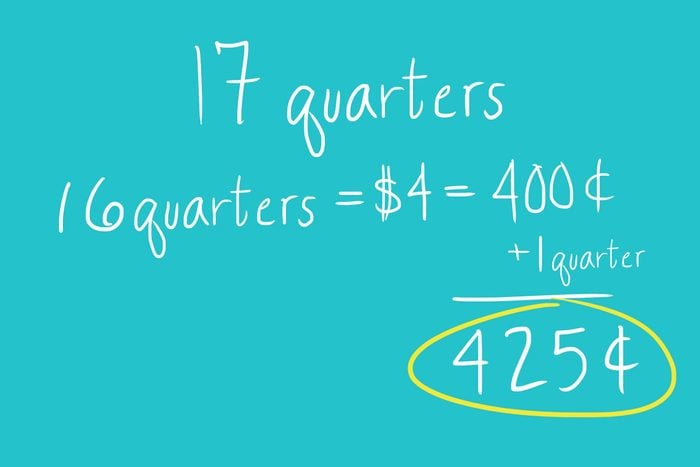
Multiplying by 25
Not everyone has their 25 times table memorized, but that’s not a problem when you think of each group of 25 as a quarter. “If you had 17 quarters, how much money would you have? Every four quarters make a dollar, so 16 of the quarters equals four dollars or 400 cents. The extra quarter adds 25 cents, for a total of 425 cents,” Snow explains.
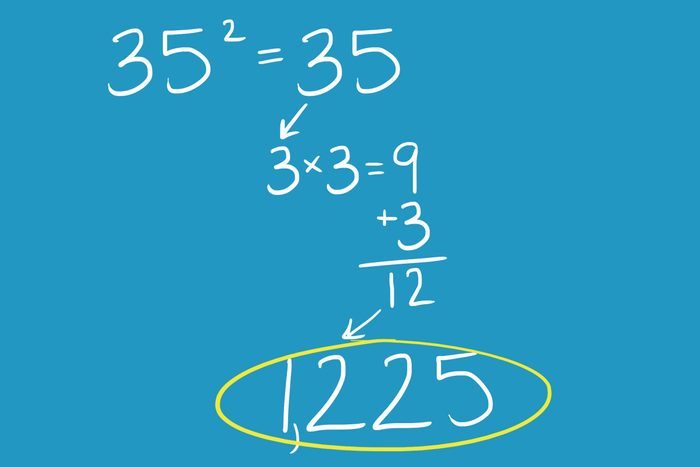
Squaring numbers that end in five
This math trick requires two steps, says Snow. In order to square a number that ends in five, take the first digit of the number and multiply it by itself. After, add the result to itself for the answer. For example, if you’re multiplying 35 by 35, take the three and multiply it by itself, which is nine, then add three to that answer, which is 12. Finally, add the number 25 to the end of the number you found and that is the final answer: 1,225. Feeling like a math expert? Put your skills to the test and try to pass this elementary school math test.
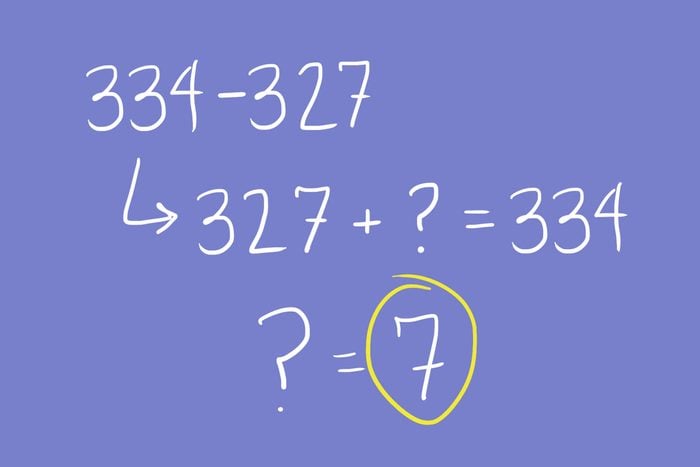
Subtracting by adding
If you find addition to be a little easier than subtraction, this trick is for you. If you are dealing with subtracting two numbers that are fairly close together, try solving the equation by adding instead. “Instead of trying to take away 327 from 334, think of it as ‘327 plus how many more equals 334?'” says Snow.
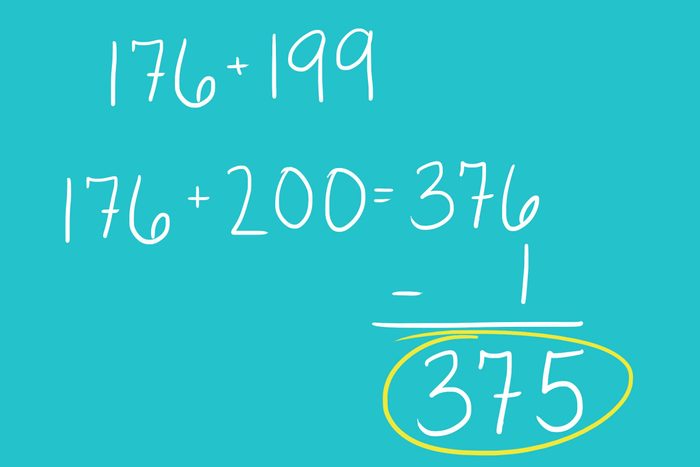
Adding 99
If you’re trying to figure out exactly how much your groceries will cost when most of the items end in .99 cents, no calculator is necessary. All you have to do is add 100 instead of 99 and then subtract one. Snow explains this process with the example 176 plus 199 equals 375. “176 plus 200 equals 376,” she says. “Since you added one more than you need, subtract one from 276 to find the answer: 275.”
Sources:
- Kate Snow, author of The Math Facts That Stick series
- CU-Portland.edu: “10 Tricks for Doing Fast Math”
- Business Insider: “10 Mental Math Tricks That Will Make You Wildly Popular At Parties”